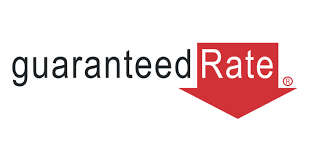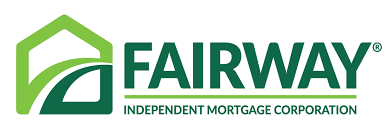A mortgage rate shows you the amount of money you’ll have to pay as a fee for borrowing funds to purchase a home, and is typically expressed as a percentage of the total amount you’ve borrowed.
Current 30 year-fixed mortgage rates are averaging 7.11%
The average rate for a 15-year fixed mortgage is 6.64%
The current mortgage rates forecast indicates that rates are likely to remain high compared to recent years but could begin to trend downward as we enter 2024. 30-year fixed mortgage rates fell for the seventh week in a row, finally dipping below 7%. This is a promising sign for rates in the upcoming home buying season, despite 15-year rates increasing from last week. Here are the U.S. weekly average rates from Freddie Mac’s Primary Mortgage Market Survey, as of December 14, 2023:
Mortgage rates remained largely in the 6% range this year until late August, when they crossed the 7% threshold for the first time since November of last year. As we continue to face inflation, rate hikes from the Federal Reserve remain a looming possibility. However, it’s important to note that even if the Fed increases the federal funds rate, it’s not a given that mortgage rates will follow. In addition, Federal Reserve Chairman Jerome Powell predicted in late June that housing inflation could come down over the next 12 to 24 months.
As a result, it seems reasonable to expect that homeowners stuck with 7% rates or higher will have a decent chance of refinancing to a lower rate in 2024.
→ The Fed’s monetary policy directly affects adjustable-rate mortgages, since their interest rates are calculated using a number — known as an index — that fluctuates with the broader economy.
→ The Fed’s policy only indirectly impacts fixed-rate mortgages, which can move more independently and, in some cases, move in the opposite direction of the federal funds rate.
There are nine primary factors that determine your mortgage rate:
There are seven options you can use to get the lowest mortgage interest rates:
If you skip the crucial step of shopping around, you miss out on the opportunity to:
If you’re struggling with where to start the process, check out our list of the best mortgage lenders below.
| Lender | LendingTree rating and “best of” category | Lender review |
|---|---|---|
 |  Best for refinance loans | Read our review |
 Best for VA loans | Read our review | |
 |  Best for jumbo loans | Read our review |
 Best online mortgage experience | Read our review | |
 |  Best for FHA loans | Read our review |
 |  Best for home equity loans | Read our review |
 |  Best overall mortgage loan variety | Read our review |
They key to choosing a mortgage lender is to comparison shop. That means getting quotes from at least three to five lenders. It may sound like a hassle but it could save you tens of thousands of dollars, according to a recent LendingTree study.
Just be sure to shop for those quotes on the same day, since mortgage rates change on a daily basis. And don’t forget to look at the APR — this will show you the true cost of a given loan, including interest and fees.

A mortgage rate shows you the amount of money you’ll have to pay as a fee for borrowing funds to purchase a home, and is typically expressed as a percentage of the total amount you’ve borrowed.
Be careful not to confuse interest rates and annual percentage rates (APR) — both are expressed as a percentage, but they’re very different. A typical interest rate accounts only for the fees you’re paying a lender for borrowing money. An APR, on the other hand, captures a broader view of the costs you’ll pay to take out a loan, including the interest rate plus closing costs and fees.
Still confused? Read our guide to better understand an APR versus interest rate.
Once you’ve selected your lender, you should ask your loan officer what options you have to lock in a rate. Mortgage rate locks usually last between 30 and 60 days and exist to give you a guarantee that the rate your lender offered you will still be available when you actually close on the loan. If your loan doesn’t close before your rate lock expires, you should expect to pay a rate lock extension fee.
You’ll need to apply for mortgage preapproval to find out how much you could qualify for. Lenders use the preapproval process to review your overall financial picture — including your assets, credit history, debt and income — and calculate how much they’d be willing to lend you for a mortgage.
Use the loan amount printed on your preapproval letter as a guide for your house hunting journey, but avoid borrowing the maximum. Our mortgage calculator can help you determine whether your mortgage payment leaves enough room in your budget to comfortably cover your other monthly bills.
The best type of mortgage loan will depend on your financial goals — while some loan types consistently offer lower rates, they may do so at the expense of higher monthly payments or complicated repayment terms. Weigh the pros and cons of a 15- versus 30-year loan and take time to understand ARM rates and how they differ from traditional fixed mortgage rates before signing on the dotted line.
If you’re considering an FHA loan because its interest rate is lower than a conventional loan rate, make sure you understand why you need to look at annual percentage rates (APRs), not just interest rates, when comparing FHA and conventional loans.
A teaser rate is a temporarily low interest rate offered on a loan product. It may be called an initial rate, introductory rate or discount rate, according to the Consumer Financial Protection Bureau. In the mortgage world, teaser rates are most commonly associated with adjustable-rate mortgages. The teaser rate period may last three, five seven or 10 years, but once it expires it typically adjusts annually.
Many home equity line of credit (HELOC) lenders offer teaser rates to their customers. Check the fine print for qualification requirements, and make sure you can afford the payment once the teaser rate period ends. You can also refinance a teaser rate loan to a fixed-rate loan in the future, if you qualify.